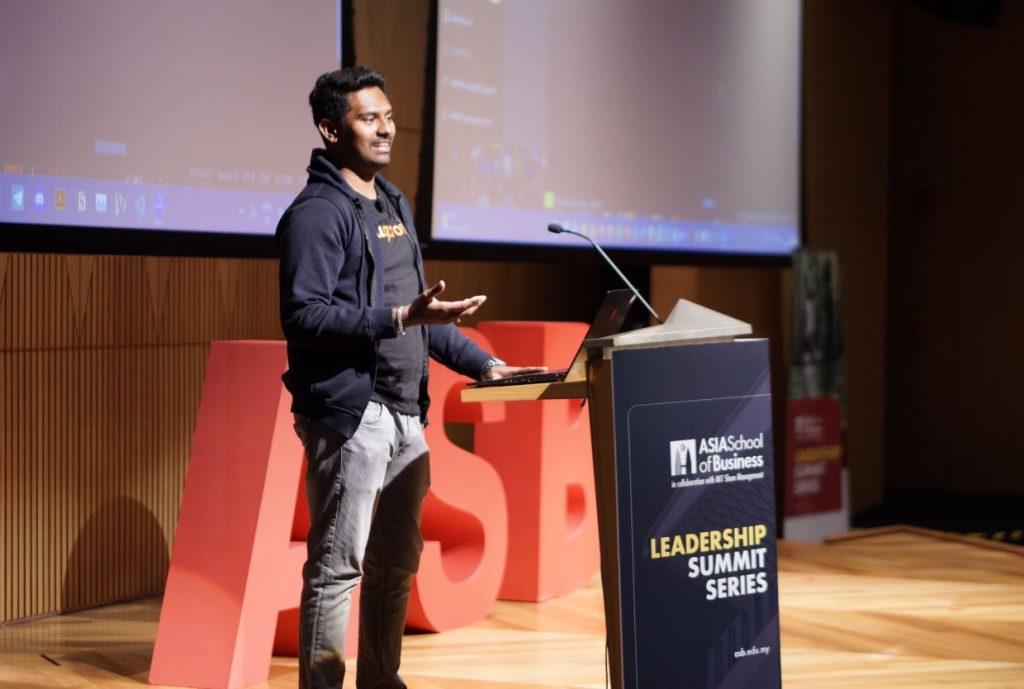Following the artificial intelligence (AI) boom that kicked off late last year with the debut of OpenAI’s ChatGPT, large tech companies have been in what feels like an AI arms race to take the lead. Industry giants like Google, Meta, Microsoft and others have been pushing further into the field of generative AI, but as the tools they create get more powerful, how much will they actually transform society?
At the Asia School of Business’ (ASB) Leadership Summit, which had the theme “AI@Work”, experts weighed in on what the future might bring. Prof Ong Shien Jin, who teaches data analytics at ASB, gave an overview of the history of AI, saying that while the buzz surrounding it has exploded in the past few months, its history goes as far back as the 1950s.
“Pioneering computer scientists were asking a question: can computers be made to think?” he said. One such scientist was Alan Turing, an English mathematician and computer scientist who developed the Turing test to determine whether or not a machine is capable of intelligent behaviour.

Prof Ong’s presentation included a live demonstration of ChatGPT solving an A-level maths problem.
The demonstration used the more powerful GPT-4 with the plug-in for Wolfram Alpha, a computational tool for answering questions and solving maths problems. “To me, this was truly impressive, because maths computation is one thing, but maths reasoning is a higher-order thinking skill. “So is it ‘game over’ for education as we know it? Maybe it’s time to rethink the maths curriculum. We think that AI is going to change education, not destroy it.
“We believe that there is a good possibility that AI and humanity can coexist in synergy, but this utopian vision is not a given because we have to work towards it,” he said. Samuel Flanders, a professor of economics at ASB, explained how ChatGPT could interpret and categorise huge blocks of text data. Prof Flanders said that in cases where there’s an abundance of text data, such as reviews or social media posts, ChatGPT can be used to extract specific information or themes from large datasets.
“In the past, your options to deal with this sort of dataset were either very superficial or very difficult to execute. “For example, you could do a search to figure out how frequently a keyword appears and associate it with a certain type of response. “Or more recently, you could do a sentiment analysis to figure out if a response is generally positive or negative. “But these are superficial; if we want to go deeper and understand what’s really going on in the data, it’s very hard to do that. “Now, you can ask holistic qualitative questions about a big dataset of text, and you can get an answer in just a few minutes,” he said.
Bring your A-game
Another demo of ChatGPT’s utility was from ASB Master’s student Swaroop Ganireddy, who managed to build an interactive website with ChatGPT in just 10 minutes by simply providing it information via prompts. Had he taken it upon himself to build it, it would have taken Swaroop over a month. Additionally, Swaroop demonstrated a Windows-compatible tic-tac-toe game that ChatGPT entirely created.

Ganireddy built a website live on stage using only prompts fed into ChatGPT. — ASB
Meanwhile, Prof Isaac Chuang, the senior associate dean of digital learning at the Massachusetts Institute of Technology (MIT), discussed a possible solution to chatbot hallucinations. Prof Chuang credits the solution to a paper by his colleagues Antonio Torralba and Joshua Tenenbaum, who had two large language models (LLM) propose differing answers and then debate in order to reach a consensus.
“The paper has these two agents talk to each other by presenting each answer to the other and asking them to resolve their differences. “In the second round, the agents apologised for the confusion and the conflicting responses and came to an agreement,” he said. Another speaker from MIT was Prof Daniela Rus, a roboticist and director of the MIT Computer Science and Artificial Intelligence Laboratory, who was optimistic about the future as the vital ingredients are already in place.
“This promise and progress are enabled by three interconnected fields. “We have robotics, which puts computing into motion and gives machines the ability to move. “We have AI, which gives machines intelligence and enables them to see, hear, and even communicate like humans. “And we have machine learning, which aims to learn from and make predictions on data,” she said.
Prof Rus shared examples of the potential of AI technology to eliminate car accidents, make transportation more affordable, better monitor, diagnose, and treat disease, keep information private and safe, enable easier communication, and make education more widespread. This would allow human workers to focus on tasks requiring critical thinking and strategy, with machines taking on other, more routine tasks. She added that, at a more granular level, all fields that have data can benefit from AI.
Other AI-based startups were also present at the event, with Urbanmetry’s CEO and founder, Cha-Ly Koh, illustrating how AI was being used in her company to clean city data and apply it to ascertain climate risks along with their impact on housing prices in a specific area. V-Cred uses AI to analyse data from loan providers, platform partners and other sources to evaluate credit risk, with the goal of approving more loans and reducing defaults.
Originally published by The Star.
Pictures courtesy of The Star.





